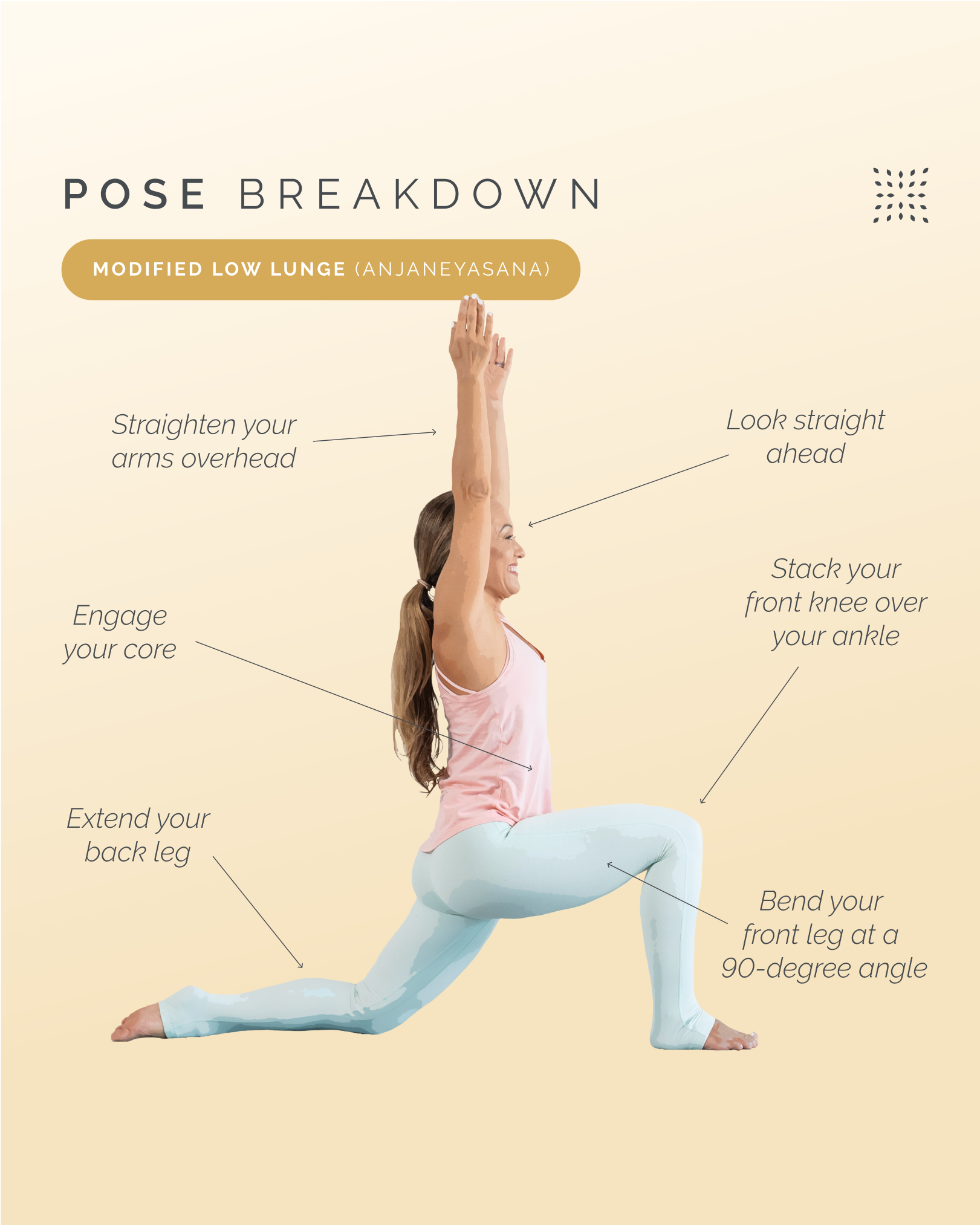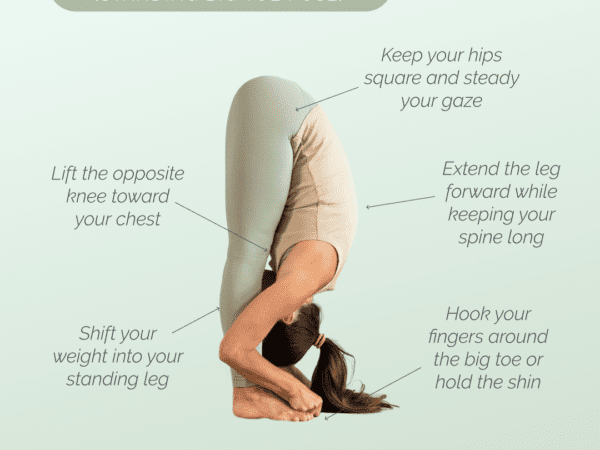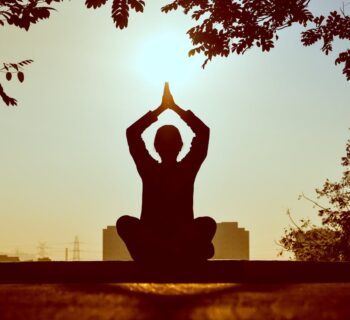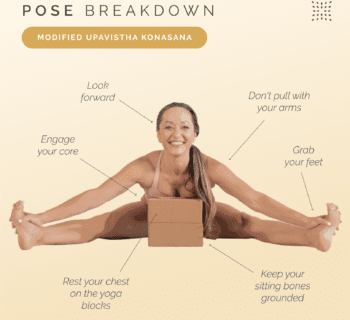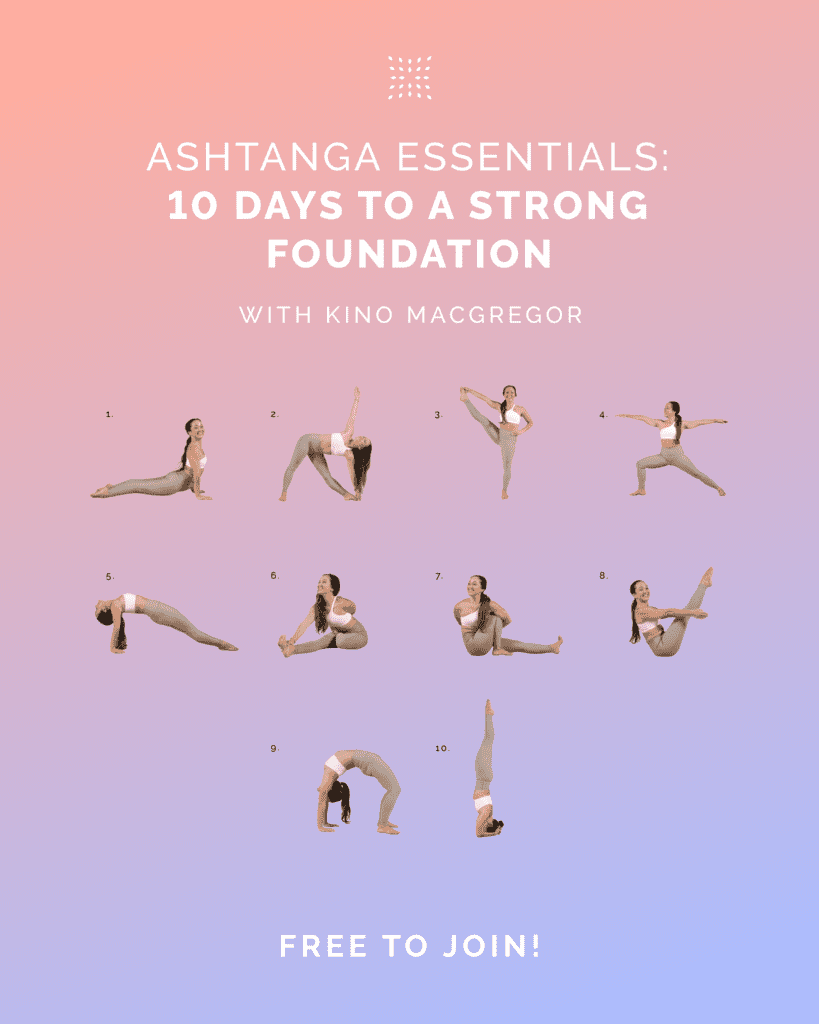Embarking on a journey to enhance your yoga practice? The modified low lunge pose (anjaneyasana) is an excellent addition to your routine, offering a blend of flexibility, strength, and balance. This pose can be adapted to suit your needs, making it accessible and beneficial for all levels. In this guide, we’ll walk you through each step, ensuring you can confidently incorporate the modified low lunge pose into your practice and reap its myriad benefits. Let’s dive in and discover how this pose can transform your yoga experience!
Benefits of Modified Low Lunge Pose
The modified low lunge pose offers a multitude of benefits that can enhance your overall well-being and yoga practice. Here are some key advantages:
Improves Flexibility: This pose stretches the hip flexors, quadriceps, and hamstrings, promoting greater flexibility in the lower body.
Strengthens Muscles: Engaging in this pose helps build strength in the legs, glutes, and core, providing a solid foundation for more advanced poses.
Enhances Balance: By requiring focus and stability, the modified low lunge pose improves your balance and coordination.
Relieves Tension: Stretching the hip area can alleviate tension and tightness, which is especially beneficial for those who sit for long periods.
Boosts Circulation: The pose encourages blood flow to the lower body, aiding in overall circulation and promoting a sense of vitality.
Supports Joint Health: Gentle stretching and strengthening can improve joint mobility and reduce the risk of injury.
Promotes Mindfulness: Holding this pose requires concentration and breath control, fostering a deeper connection between mind and body.
Incorporating the modified low lunge pose into your yoga routine can lead to significant physical and mental benefits, enhancing your practice and overall well-being.
Contraindications for Modified Low Lunge Pose
While the modified low lunge pose offers numerous benefits, it’s important to be aware of certain contraindications to ensure a safe practice. Here are some conditions and situations where caution is advised:
Knee Injuries: Individuals with knee pain or injuries should avoid this pose or use modifications, such as placing a cushion under the knee for support.
Hip Issues: Those with hip problems or recent hip surgeries should consult a healthcare professional before attempting this pose.
Lower Back Pain: If you experience lower back pain, proceed with caution and consider using props or modifications to reduce strain.
Pregnancy: Pregnant individuals should modify the pose to avoid excessive pressure on the abdomen and consult with a prenatal yoga instructor.
Balance Issues: If you have difficulty maintaining balance, use a wall or chair for support to prevent falls.
High Blood Pressure: Those with high blood pressure should avoid holding the pose for extended periods and focus on gentle modifications.
Recent Surgeries: Anyone recovering from recent surgeries, especially in the lower body, should seek medical advice before practicing this pose.
By being mindful of these contraindications and making necessary adjustments, you can safely enjoy the benefits of the modified low lunge pose while minimizing the risk of injury.
Step-by-Step: How to Do Modified Low Lunge Pose
Begin in a Kneeling Position: Start by kneeling on the mat with your knees hip-width apart and your back straight.
Step Forward with One Foot: Bring your right foot forward, placing it flat on the mat with your knee directly above your ankle. Your left knee should remain on the ground.
Align Your Hips: Ensure your hips are squared to the front, facing forward. Engage your core to maintain stability.
Lengthen the Spine: Inhale deeply and lengthen your spine, drawing awareness to the anatomy of your vertebrae as you reach the crown of your head towards the ceiling.
Lower the Hips: Exhale and gently lower your hips towards the mat, feeling a stretch in your left hip flexor and right hamstring, and enjoy this deep hip opener. Keep your back leg extended with the top of your left foot resting on the mat.
Adjust Your Position: If needed, place a cushion or folded blanket under your left knee for added comfort and support.
Raise Your Hands: Raise your hands above your head, keeping them shoulder-width apart. Ensure that your chest remains open and lifted. Alternatively, you can rest your hands on your right thigh to make balancing easier.
Hold the Pose: Maintain this position for several breaths, focusing on deep, steady inhalations and exhalations. Feel the stretch and engage your core for stability.
Release the Pose: To release, gently bring your right foot back to the kneeling position. Take a moment to rest before repeating the pose on the other side.
Repeat on the Other Side: Follow the same steps with your left foot forward and right knee on the ground, keeping your shoulders relaxed, to ensure balanced stretching on both sides.
By following these steps, you can safely and effectively perform the modified low lunge yoga pose, keeping the back leg on the ground to enhance your flexibility, strength, and balance.
Additional Tips for Practicing Modified Low Lunge Pose
Warm Up First: Ensure your body is adequately warmed up before attempting the pose. Gentle stretches and light movements can prepare your muscles and joints.
Use Props: Don’t hesitate to use yoga blocks, cushions, or blankets for added support and comfort, especially under the back knee.
Focus on Alignment: Keep your front knee aligned directly above your ankle to avoid strain. Your hips should remain squared to the front.
Engage Your Core: Activating your core muscles will help maintain stability and protect your lower back.
Breathe Deeply: Focus on deep, controlled breaths. Inhale to lengthen the spine and exhale to deepen the stretch.
Modify as Needed: If you experience discomfort, adjust the pose by reducing the depth of the lunge or using additional support.
Listen to Your Body: Pay attention to your body’s signals. If you feel pain (as opposed to a gentle stretch), ease out of the pose and consult a yoga instructor if necessary.
Practice Regularly: Consistent practice will improve your flexibility and strength over time. Incorporate the pose into your routine to see gradual progress.
Stay Mindful: Use this pose as an opportunity to connect with your breath and body, fostering a sense of mindfulness and relaxation.
Consult a Professional: If you have any medical conditions or injuries, consult with a healthcare professional or experienced yoga instructor to ensure the pose is safe for you.
By incorporating these tips into your practice, you can maximize the benefits of the modified low lunge pose while ensuring a safe and enjoyable experience.


